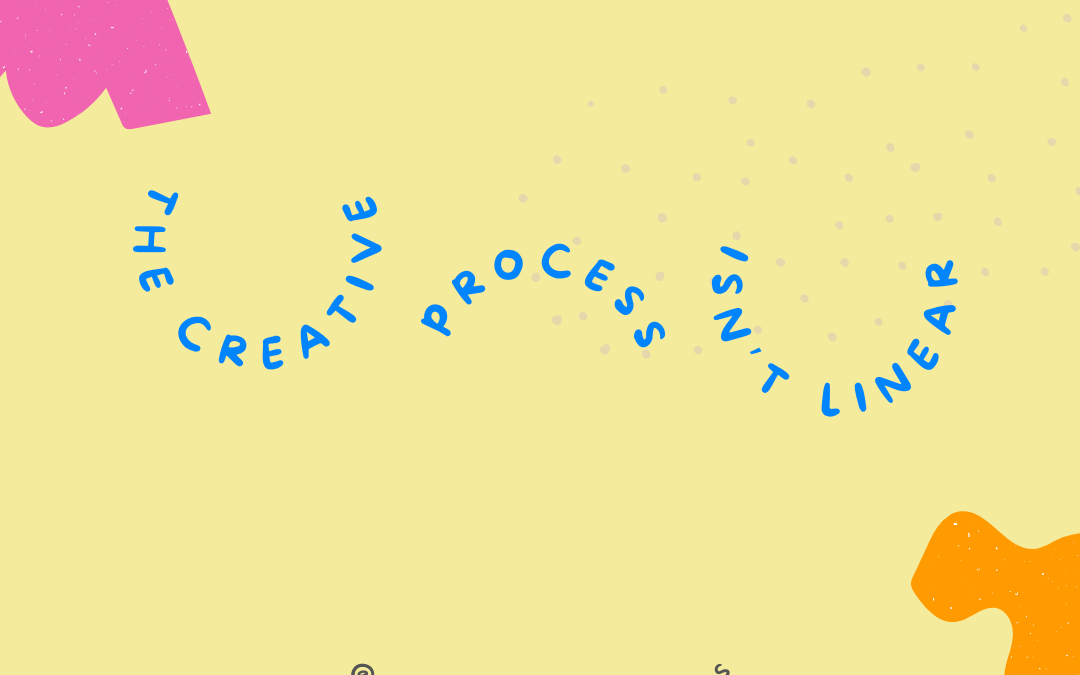As a neurodivergent mom, I’ve learned that the creative process in worldly education rarely follows a straight path. Whether it’s designing a lesson plan, engaging in a hands-on project with my daughters, or simply navigating the ups and downs of our homeschooling journey, creativity takes us on unexpected detours. And that’s okay, it’s part of what makes learning so enriching and fulfilling.
Embracing the Zigzags
In a world that often values efficiency and order, it can be challenging to embrace the messy, unpredictable nature of creativity. But for many of us, especially those with ADHD or autism, creativity thrives not in straight lines but in zigzags, loops, and spirals. We might start with one idea, then pivot to another as inspiration strikes, only to circle back to the original thought in a new and exciting way.
This non-linear approach is not a flaw, but it’s a strength. It allows us to explore multiple possibilities, connect seemingly unrelated ideas, and come up with solutions that might not have been obvious at the start. It’s what makes our homeschool experience unique, full of surprises and discoveries that keep us engaged and motivated.
Letting Go of Perfection
One of the biggest challenges in embracing a non-linear creative process is letting go of the need for perfection. It’s easy to get frustrated when things don’t go as planned, when a project takes longer than expected, or when the end result doesn’t look like what we envisioned. But perfection is rarely the goal of creativity. The goal is to express, to explore, and to learn.
In our homeschool, I’ve found that the most valuable lessons often come from the unexpected twists and turns. When a science experiment doesn’t go as planned, we talk about why it didn’t work and what we can learn from it. When a piece of art doesn’t turn out “perfect,” we celebrate the effort and the ideas behind it. These moments teach my daughters and me: that creativity is about the process, not just the product.
Encouraging Creative Freedom
To support my daughters in their creative journeys, I’ve made a conscious effort to create an environment where they feel free to explore without fear of judgment or failure. This means providing them with a variety of materials and opportunities to experiment, whether it’s through art, writing, building, or any other form of creative expression. It also means being patient and understanding when their creative process doesn’t follow a linear path.
I encourage them to follow their interests, even if it leads them in unexpected directions. I’ve found that when they are given the freedom to explore, they not only develop their creativity but also their confidence and resilience. They learn that it’s okay to take risks, to make mistakes, and to try again.
Celebrating the Journey
The creative process, with all its twists and turns, is a journey worth celebrating. It reflects the way our minds work: complex, dynamic, and full of potential. By embracing the non-linear nature of creativity, we open ourselves up to new possibilities and experiences that enrich our lives and our learning.
In our homeschool, creativity isn’t just a part of what we do, it’s how we do everything. It’s a process that might not always be straightforward, but it’s always rewarding. So, here’s to the zigzags, the detours, and the spirals that make the creative process what it is: beautifully non-linear.


